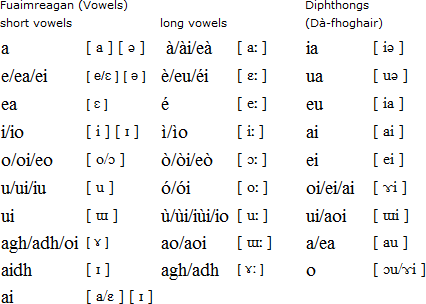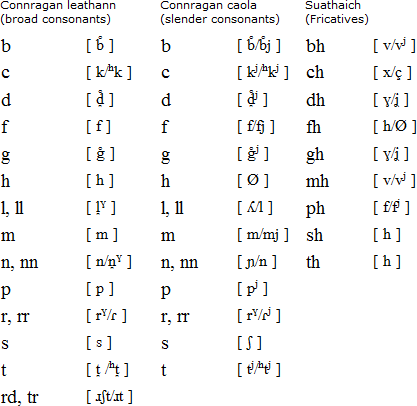The Gaelic alphabet has five vowels and thirteen consonants. The vowels are further divided into "broad" vowels and "slender" (sometimes called "small") vowels.
Vowels
- Broad: a o u
- Slender: e i
Consonants
b, p, f, m, c, g, l, n, r, t, d, s, h
You will often see accent marks over vowels. This is just a "duration" mark and means that you hold the vowel for longer. If you are familiar with phonetic alphabets, it is the same as placing : after a vowel.
Gaelic has diphthongs and triphthongs, which are combinations of two and three vowels that flow together.
Gaelic also has an interesting phonetic aspect known as "lenition." In older Gaelic books this is sometimes referred to as "aspiration" but this term is incorrect. Lenition is best described as a kind of "softening" or "weakening" of a consonant. In Gaelic, lenition is shown by writing "h" after a consonant.
Here is a series of links with good descriptions of Gaelic phonetics:
http://www.smo.uhi.ac.uk/gaidhlig/ionnsachadh/ECG/02.html
http://www.smo.uhi.ac.uk/gaidhlig/ionnsachadh/ECG/03.html
Here are also some images from the wonderful site Omniglot. These images use IPA (International Phonetic Alphabet.)


Don't get too overwhelmed by the phonetics of Gaelic. Remember that over time you will get a feel for things. Don't worry about trying to memorize all of the sounds in Gaelic just yet.
No comments:
Post a Comment